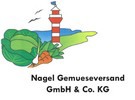In the northern German cabbage stronghold of Dithmarschen, the storage of red and white cabbage is now in full swing. "We found optimal weather and storage conditions in October, which is why the white cabbage harvest has gone according to plan so far. Due to the wet conditions and correspondingly smaller heads, we initially expected a weaker harvest year. Later, the cabbage heads found better conditions, which contributed to corresponding growth and good head sizes overall. This means that we have the right product for every segment, whether fresh market or industry," reports Hannes Nagel, Managing Director of the company of the same name based in Friedrichskoog.
The majority (approx. 85 percent) of his produce goes to the fresh market. In addition, export markets in Central and Eastern Europe are already being supplied with Dithmarsch white cabbage, which is rather unusual at this time of year. "Early cabbage, which could already be offered from mid-June, has also become more important again in recent years, which is due to the fact that the smaller family farms are primarily dedicated to growing storage cabbage."
The situation on the red cabbage market, on the other hand, is somewhat tighter: "Supply quantities have been quite tight right from the start, which is clearly due to the weaker yields this year. Everyone is now trying to hold back produce for the Christmas period, which is reflected in the producers' reluctance to sell," Nagel continues.
White cabbage continues to be Nagel's main crop, closely followed by cauliflower. The family business is also dedicated to the cultivation and sale of broccoli, red cabbage, savoy cabbage and, for the past two years, pointed cabbage.
Good cauliflower season, weaker broccoli campaign
The summer vegetable season ended in calendar week 41 with the delivery of the last batches of cauliflower and broccoli. According to Nagel, the quality remained consistently high. "For the most part, cauliflower brought in good revenues. We had no trouble placing the accumulated quantities on the market, so we had hardly any returns overall. The goods in the warehouse were rotated completely every four days, which indicated a good flow with consistently pleasing quality. In the case of broccoli, on the other hand, the early crops in particular suffered from the heavy rainfall, which in turn was reflected in weaker yields. Sales were also rather mixed, which is why I would rate this year's broccoli campaign as challenging overall."
Structural change in the coal sector and capacity expansion
Last year, the company Nagel was able to put a new warehouse with a capacity of 2,100m2 into operation. At the same time, the acreage, primarily of white cabbage and cauliflower, was significantly expanded (+50 hectares). Nagel points to the gradual structural change in the Dithmarschen cabbage sector. "Farms continue to close, not so much due to the market situation as to the precarious shortage of skilled workers. As a larger company, we have the advantage of crop diversity, which in turn means that we are constantly in need of employees, which also makes it much easier to find them. In view of the average age of the producers and the succession situation, I also strongly assume that this market adjustment will accelerate again in the coming years."
Photo credit: Nagel Gemüseversand GmbH & Co. KG
For more information:
Hannes Nagel
Nagel Gemüseversand GmbH & Co.KG
Koogstr. 33
D-25718 Friedrichskoog
Tel: 0049 48 54 - 93 66
Fax: 0049 48 54 - 93 68
Mobile: 0049 172 - 9098025
Mail: [email protected]
www.nagel-gemueseversand.de
